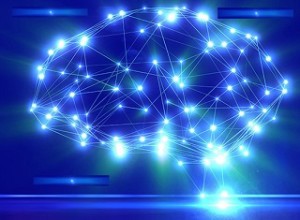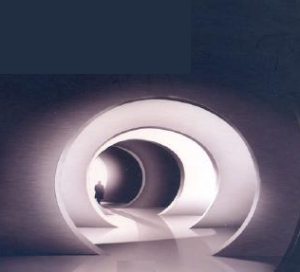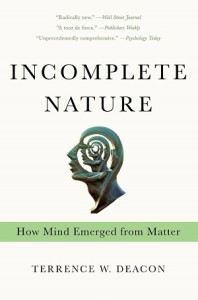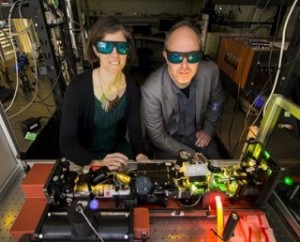
Arquivo para a ‘Computer – Hardware’ Categoria
The technologies that will dominate 2018
One is undoubtedly the order of the day, but it must grow until 2021, it is Virtual and Augmented Realities, with the difference that the first is the creation of a totally virtual environment while the second is an insertion of virtualities in the real environment, the Pokemon Go, second version of the little monsters grew in 2017.
Virtual and Augmented Realities, with the difference that the first is the creation of a totally virtual environment while the second is an insertion of virtualities in the real environment, the Pokemon Go, second version of the little monsters grew in 2017.
Estimates from research groups such as Gartner and TechCrunch, is market will move more than 100 billion dollars by 2021, as next year is from Copa, Japan by example promises unprecedented broadcasts to 2022 in Quatar.
The internet of things is increasing its possibilities, how much we thought that the technology of networks 5G was distant in the USA already is in operation in many places and could be a reality next year, with this the internet of the things that depends on this transmission efficiency can reach new directions such as water systems, low cost energy and sophisticated traffic control systems, finally entering the IoT (Interner of Things) in people’s lives.
Another concern, but we do not know if the systems will become more efficient, are the security systems this year WannaCry affected telephone systems and FedEX, among others, reaching up to affect more than 150 countries, there are promises for 2018. Data production reached 2.5 exabytes per day (1 exabyte = 10 ^ 18 bytes), and BigData’s technology came to stay, but an important ally in the handling and handling of this data should be Artificial Intelligence (in Picture vision abourt polygonal brain), the intelligent agents that will dominate the Web 4.0 should appear this year, but the forecast to become reality on the Web is for 2020.
3D printer and nanotechnology are already reality, but should move forward, as well as the early reality of the 5G internet, we posted yesterday yesterday the “novelty” gadgets, the conceptual smartphone and the 360-degree camera, in technology sometimes surprise these things bombing the practical reality.
The technology is part of the history of humanity, we will post tomorrow about the year 2017, in facts.
Technology and bad news in 2017
The brazilian Minister of Technologies Gilberto Kassab announced in January this year that broadband would have limited data, and mobilization of users and even Anatel was immediate, also this month the good old Nokia (now global HMD) announced its membership in the Android system, which is becoming more universal.
January this year that broadband would have limited data, and mobilization of users and even Anatel was immediate, also this month the good old Nokia (now global HMD) announced its membership in the Android system, which is becoming more universal.
In January South Korean Samsung admitted the problems of explosions with Galaxy Note 7.
February was marked by a series of smartphones, such as the revived design of the Nokia 3310, without the same immediate success of the first generation the Pokemon Go hit the market.
In March Nintendo released the console Switch, the ZenFone 3 Zoom is released in Brazil, as well as the Galaxys S8 and S8+.
April was the month of the alert, the play of bad taste Blue Whale began to proliferate, there was also the case of the boy from Acre who left encrypted messages and disappeared.
May was the month of the ransomware virus WannaCry, which affected Telefonica Compay and FedEx, in 3 days the virus was neutralized, but the collection of bitcoins for captured files yielded a million probably the author has not yet been identified.
In June variations of the WannaCry affected possibly the origin has been in Russia.
In July, the virtual mural application Sarahah appears, the app is controversial because different from the spinners (virtual ads), allows the anonymity that can be source of blows.
In August Andy Rubin, considered the father of Android, launches the concept of Essential Phone, but like most Big Thing projects in the digital world, still lacks evolutions.
September was the same as the iPhone 8 and 8 Plus, as well as a commemorative edition of the iPhone X version ten years ago, but the Chinese Xiomi with Mi Mix 2 and ZenFone 4 appeared on the market.
September was the same as the iPhone 8 and 8 Plus, as well as a commemorative edition of the iPhone X version ten years ago, but the Chinese Xiomi with Mi Mix 2 and ZenFone 4 appeared on the market.
A new attempt at a revolutionary model was the GoPro Fusion (Picture), with a 360 degree camera.
October Google launches Pixel 2 and Pixel 2XL after the purchase of the HTC division.
November launched them to begin to rarify, but Razer launched the Razer Phone, and Tesla launched the semi-automatic and electric truck, but still subject to evolutions.
December brings the worst news, Trump’s idea of taking away the neutrality of the internet (companies would have more “band”) begins to thrive, would the end and total commodification be? we hope not, while technology fear is advanced, monopolies make the party.
Complexity, consciousness and machines
Both complexity and consciousness are phenomena that belong to the biological nature, as Searle asserts, “it is an objective fact of the world to have certain systems – the brains – which are provided with subjective mental states, and physical systems of similar systems have traits mental “, so the infernal dichotomy between culture and nature is so capital in the liberal-idealist model.
nature, as Searle asserts, “it is an objective fact of the world to have certain systems – the brains – which are provided with subjective mental states, and physical systems of similar systems have traits mental “, so the infernal dichotomy between culture and nature is so capital in the liberal-idealist model.
This brings Searle closer to intentionality, the capital category of Franz Brentano and intermediary of Husserl’s phenomenology, but it is an “intentionality” defined as “the fundamental biological capacity of the spirit to put the organism in relation to the world,” and even if it is ” placed “on machines, they lack this subjectivity of the spirit.
It is different when we speak of intentional acts as acts of language, a phrase or even sounds that can come out of the mouth being recorded or marked on a sheet of paper, is a physical object at the origin as another, but as long as the ability to represent something is no longer intrinsic, for example, if it is a feeling, a belief, or a desire.
Intentionality in the machine exists only as a state, act or action, never as feeling, desire or belief, it is inherent in it that one state leads to another, even if it is a state of rest, but never that of feeling, if it exists it is simulated.
The author writes that “the ability of language acts to represent objects and states of affairs in the world is an extension of the biologically more fundamental capacities of the mind (or brain) to put the organism in relation with the world through mental states such as belief or desire, and in particular through action and perception. ”
The idea that this may be objective and will simply be a machinic act is as strange as digestion or tasting, it is not the difficulty of imitating these senses by machines, perhaps one day it is possible, but the fact that even though they do what biologically a person does will be a chemical-physical and never a mental act.
They can be done until the machines dream like in Blade Runner, or teach “love” as in A.I. (directed by Spielberg, 2001), it will still be a cybernetic and not a mental state.
In next week we explore complexity, it also has a biological origin.
.
The future of thinking machines
We made a point of making the classifications (post) between cyborgues,  androids and humanoids, showing that the hybrids are still a fiction for some and a delirium for others, as our view is the point of singularity of Raymond Kurzweil.
androids and humanoids, showing that the hybrids are still a fiction for some and a delirium for others, as our view is the point of singularity of Raymond Kurzweil.
Points of singularity m (it is good to say technological, since there are others) would be that point where there would be a surpassing of biological human to a post-human technological, of silicon or even something more futuristic, photonic or neo-biological (biological chips, for example ).
Raymond Kurzweil’s definitions are clearer and more precise, he wrote in 1987 The Age of Intelligent Machines and then in an even greater delirium an update to The Age of Spiritual Machines where he seeks to find where the so-called Transcedent Man (documentary 2009), and then we can outline his ideas.
You can delineate your ideas in 4 points: technological evolution up to its definition of singularity is one of the tangible objectives of humanity (will be?) By exponential progression, the functionality of the human brain is quantifiable in terms of technology and can be built in a near future (but only functional); average advances can keep a significant amount of their generation alive enough for the increase in technology to pass human brain processing (one thing does not imply the other, could be done with future generations), and a point that is socially interesting that the theory of accelerated evolutions.
This theory says that the theory of accelerated change refers to the increase in the rate of technological innovation (and sometimes it may be accompanied by social and cultural evolution) and is always present in history, which may suggest faster and deeper change in future, although this is true how much accelerated depends on the historical perspective.
We define this evolution as the noosphere, a sphere of mind or spirit, based on the idea of John Searle, that the mental “real and ontologically irreducible” to the physical, and that technologies evolve and accelerate human growth but are separated by what Juergen Schmidhuber calls “uniqueness of the omega”, something at once similar and different from the omega of Gregory Chaitin, because it is not a number or a number, but what Teilhar Chadin (1916) defines in his noosphere as the beginning and end of the human , but wrapped in a connection of minds and spirits as if they were communicating vessels.
For Juergen Schmidhuber, the next Omega – 2040 (there was no film Blade Runner 2049) from his series Omega – 2 ^n human lives (n <10; human lives (n <10; a life – 80 years) about major stages of events would occur in human history.
He questioned the validity of such changes by suggesting that they merely reflect a general rule for “both the individual memory of the single human being and the collective memory of whole societies and their history books: constant amounts of memory space allocated to get exponentially greater, adjacent time slots more and more into the past, “and it is memory and not Moore’s law that speaks of the growth of digital memories.
His suggestion is that “the reason why there has never been a shortage of prophets predicting that the end is near – important events according to their own vision of the past always seem to accelerate exponentially,” so both ancient and modern prophecies are no longer that oracles that establish this reconnection between the “omega” of the beginning and end, announcing great changes and at the same time connected to them.
There is a very clear example of Jürgen Schmidhuber’s acceleration, given in Wurman’s book, “Information Anxiety” (1991), where he says that a person who read the New York Times for a year read more than the best of the men of the eighteenth and earlier centuries, then of course there is more reading today than in previous centuries, but thinking … need evolution.
Autonomous robots?
Autonomous robots are a denomination for those who are within the environmental limits, can achieve the desired goals (by humans or by tasks organized in an algorithm) in these unstructured environments without a human help, by this they are in certain levels.
limits, can achieve the desired goals (by humans or by tasks organized in an algorithm) in these unstructured environments without a human help, by this they are in certain levels.
For example, within a factory where mechanical tasks are performed, to avoid accidents, their geographic space is limited and deficient to detect the defect that can be fulfilled by a forged task, since a space robot should have fewer limits and be the most autonomous autonomous, for being without possibility of direct human action and having communication difficulties due to a distance.
The project called SWARM, funded by the European Union and we have already made a post, now has the first multi-robot system of autonomous assembly that has sensory-motor coordination observing similar robots around them, they will vary in shape and height in white according to a task and / or work environment.
A central “cerebral” central coordinating system, all of us, through a system called MNS (Mergeable Nervous System), and thus are reconfigured observing different capacities but combined by a single central controller.
They can also split up and perform self-repair tasks, eliminating defective body parts, including a brain unit with some defect, of course, one can define which are defeats and self-repairs.
In autonomous robots, learning and strategy according to the environment, what you can do with your autonomy increases, but for what you can print, the article is still not the case.
The current model has 10 units, and the authors point out without paper published in Nature Communications, claim that the Project is scalable, both in terms of computational resources for robotic control and time of reaction to stimulus, whithin the system.
How are cyber-brain searches?
There is a lot of research mapping the brains, and investigating aspects of how certain  functions work such as: motor function, vision, and in a very special way the
functions work such as: motor function, vision, and in a very special way the
Cognitive Neuroscience studies the cognitive ability (knowledge) of a person, such as reasoning, memory and learning.
A recent study by the Universities of Exeter and Oxford of the United Kingdom, in conjunction with the University of Munster in Germany, has developed photonic microchips that immitate the synapses of the human brain using light and no longer electricity, as in other chips.
The chips is manufactured using the frequency phenomenon, but from the combined phase shift in the integrated photonic circuits designed for this, with synapses can operate at 1,000 times the speed of humans, which does not mean they do the same.
The researchers say that it is a fundamental step in machines capable of functioning and in the way of thinking in a way similar to the brain since the photon is fast and low energy consumption.
David Wright told the University of Exeter website that the project addresses two important issues in electronic computing, both speed and efficiency and capacity problems in parallel processing, the fastest of now: ” not only by developing…new brain-like computer architectures, but also by working in the optical domain to leverage the huge speed and power advantages of the upcoming silicon photonics revolution “
On-chip photonic synapse by Zengguang Cheng, Carlos Rios, Wolfram Pernice, C David Wright and Harish Bhaskaran is published in Science Advances.
Blade Runner 2049 is better
A classic fiction film is undoubtedly Blade Runner, I do not consider the best nor the first, because we must remember Lost in Space (1965 to 1968) if we think of TV series and the Stanley Kubrick classic 2001: A Odyssey in the space of 1968, said by some: “the most incredible, beautiful and mentally stimulating science fiction film of all time.”
best nor the first, because we must remember Lost in Space (1965 to 1968) if we think of TV series and the Stanley Kubrick classic 2001: A Odyssey in the space of 1968, said by some: “the most incredible, beautiful and mentally stimulating science fiction film of all time.”
For those who knew the plot of the movie that is about to be released, there are some new and strange things.
But Blade Runner brought the replicants, hybrid beings whose true robotic identity is hidden, and only by the eye (more precisely by the iris could be identified) and in full war with humans, so they say, is the father of many modern science fiction in the robotic line.
In a cavernous setting in Budapest on an autumn morning in 2016, Harrison Ford – wearing a gray button-down shirt, dark jeans and a Ford-resistant grimace – is shooting a crucial rendezvous in Blade Runner 2049, now directed by Denis Villeneuve
For the first time in more than three decades, Ford is resuming its role as Rick Deckard, the fast-fingered, hard-drinking cop in 1982, of Ridley Scott’s first Blade Runner.
Why K (Ryan Gosling on the android hunter cop) does not just use the front door is not exactly clear, since the Blade Runner 2049 plot is protected with the kind of intensity usually reserved for Star Wars. (Even negotiating to get into the set demanded more and after a Voight-Kampff test).
Ana de Armas stated that her character is “strong and complex,” she “is Agent K’s mistress, her best friend, and the only person she can trust.”
After 30 years of Blade Runner there are some confirmed details: the public left Deckard injured and mistreated in 2019 Los Angeles, he disappeared, and the official LAPD of Gosling is on the hunt (possibly under the command of his boss, played by Robin Wright, although nobody involved with the movie say for sure).
Meanwhile there is a new generation of replicants – the series term for the androids that are built by a mysterious inventor named Wallace (Jared Leto), who is aided by a dedicated employee, Luv (Sylvia Hoeks).
That’s pretty much everything the 2049 team is saying, no matter how politely I ask. “I’m not even sure I’m allowed to say I’ve had a good time doing it,” laughs actor Gosling.
The launch is scheduled for October 5, 2017 (in Brazil).
Has the mind emerged from matter?
This question lies in the work of Berkeley’s philosopher, anthropologist and cognitive scientist Terrence Deacon, in Incomplete Nature: how mind emerges from matter (2013), where Deacon considers information a phenomenon whose existence is determined respectively by an essential absence, something like Not realized that may or may not be the accomplished one.
cognitive scientist Terrence Deacon, in Incomplete Nature: how mind emerges from matter (2013), where Deacon considers information a phenomenon whose existence is determined respectively by an essential absence, something like Not realized that may or may not be the accomplished one.
If in the 19th century the great paradigm was to admit the existence of energy and its relation to matter, now modified by Constantine Tsallis (see our post), the 20th century brings to us its difficulties in assimilating the existential unreality of information. A complete explanation of the real nature of information is such that it would be necessary to distinguish information from merely material or energetic relations which also require a paradigm shift, so a form / background alternation that we call this in-form-action in my blog would still be More fundamentally a counterintuitive vision than that demanded by energy (Deacon, 2013, p.373)
Deacon uses for his argument, several examples from biology and mathematics to justify his idea, essentially emerging from a nothingness, is not really new in philosophy and science, still less in logic and mathematics, but unlike Descartes Where the first certainty is the I, in modern mathematics the first certainty is the 0, the empty set and now with the digital, 0 and 1, that emerges a metamamatic as Gregory Chaitin wants, which we already discussed in another post.
The cardinal number model of the mathematician Von Neumann defines all numbers literally from scratch: there is the empty set. The empty set itself has an element: the empty set itself, Alain Turing and Claude Shannon idealized the machine, but it was von Neumann who built it, if we think the Mark I and Konrad Zuze’s machine were no more than electro calculators -mechanics. A mathematician connected to the theory of Sets, Ernst Zermelo, although he makes a different reasoning, also part of the zero to reach all the cardinals. Information is part of modern man, not only in the city, but now in the so-called Information Society, that we ourselves will produce it from situations where we identify that something is missing.
This appears to be the best approach to address the nature of information She is always something that is missing. As if at all times reality was wondering: now what is missing, and providing what it can. This idea is even known to us. Being proactive, efficient, organized, is always to have a preventive and proactive attitude towards possible situations.
It’s an anticipation. It is to detect what is lacking and to provide. According to Deacon, this logic permeates all reality. In addition to the abundant infosphere in which we stand, emerging information is a constant demand, whether through living beings or not.
Deacon claims the idea of mathematician and communication theorist Claude Shannon, who associated maximum entropy with minimal information and vice versa, bringing information to the origin of the order / disorder dichotomy, so dear to theories of complex systems, the mathematics of chaos and to the irreversible thermodynamics of the dissipative structures of Ilya Prigogini, Nobel Prize in Chemistry 1977, from where the ideas of Chaos and Complexity emerges.
Constantino Tsallis, Terrence W. Deacon and Gregory Chaitin has talks in EBICC Conference in São Paulo, Brazil.
DEACON, T. W. Incomplete Nature: the mind emerged from matter. 2013.
What they say of the iPhone 8 and plus
I do not know if they have said anything before, but I was able to read the first comments yesterday from Hi Phone 8 and the plus model, Mathew Panzarino from TechCrunch highlights the camera “with augmented reality and computer vision emerging as competitors in the next big wave of development platforms, the camera system will be an [important] input mechanism, a communication system and a declaration of intent. ”
first comments yesterday from Hi Phone 8 and the plus model, Mathew Panzarino from TechCrunch highlights the camera “with augmented reality and computer vision emerging as competitors in the next big wave of development platforms, the camera system will be an [important] input mechanism, a communication system and a declaration of intent. ”
Another important technology site is Engadget, Chris Velazco wondered how ARKit-like apps would work and enjoyed the augmented reality experience and said that rendering virtual objects on physical planes made them “stick to surfaces better than similar Tango apps “.
Another strong site in the area is The Verge, Nilay Patel’s comment was: “Just like on Samsung, the iPhone’s images are now more saturated by default, although Apple says it’s still aiming for realism instead of saturated colors and smoothing the S8 “and said later that taking pictures with an iPhone 8, a Pixel XL, an S8 and an iPhone 7” in the automatic, and the iPhone 8 produced the most consistent and rich images of the group.
The novelty in the software was due to the feature Portrait Lighting, which allows light effects with the front camera, the battery lasts about 11 hours warns another review,
Lastly, but the most important tech site David Pierce of Wired said that “the phones are very good and impressive, and yet they are not the best Apple devices. The iPhone X represents the vision of the future of Apple, as well as Samsung, Essential, Huawei and many others. ”
It is expected much more and more from cameras and graphics treatment Apps, performance and memory seem to be important, but are getting in the background, TechCrunch site for example notes that “the A11 chip from Apple has a performance that is compatible with the Core i5 of MacBook Pro. ”
With the importance of graphics and image processing OLED screens of higher definition will be importante.
The quantum internet is coming
While 5G connections promise to be a reality in the year 2019, researchers  from Australia are moving towards building an internet based on the foundations of quantum laws. Researchers at the National University of Australia (ANU) published last Monday in Science Daily, a type of crystal structure reinforced with erbium material that can take advantage of quantum mechanical properties to make the entire World Network.
from Australia are moving towards building an internet based on the foundations of quantum laws. Researchers at the National University of Australia (ANU) published last Monday in Science Daily, a type of crystal structure reinforced with erbium material that can take advantage of quantum mechanical properties to make the entire World Network.
The group’s coordinator, Professor Matthew Sellars, said: “Efforts to build a quantum computer have often been described as the ’21st century space race’, but today’s computers were not aware of their potential until we internet, “and that this could unleash the” potential of future quantum computers. ” The result that was discredited a decade ago, now: “Seeing this result, it’s great to know that our focus was the right one,” Sellars said.
The bottleneck of computing is not so much the processing speed that continues to grow as slower storage time and growing linearly, as an old law called Moore’s law states, since a quantum memory is compatible with telecommunications, which is the challenge of researchers today. Researcher Rose Ahlefeld (photo with Sellars), who participates in the project, noted: “A telecommunications-compatible quantum memory is a vital component of a practical quantum internet,” and this possibility will be the quantum leap in the digital world.
The material built as the erbium is compatible with current optical fibers and in addition will be able to connect with many types of quantum computers, including silicon qubits in various prototypes and also at the Australian university
.

